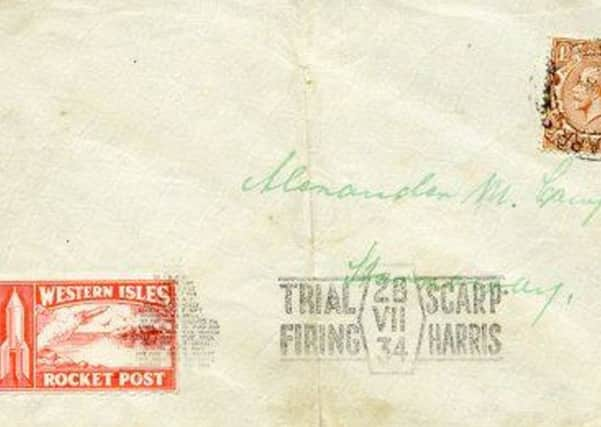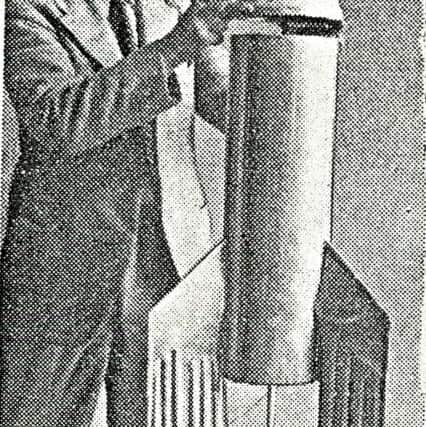The experiment to deliver letters by rocket in the Hebrides


Gerhard Zucker arrived on the tiny island of Scarp off Harris in July 1934 to test out his new airmail service with a plan to send a rocket loaded with letters and packets half a mile to the main island.
Zucker had earlier been involved with a test on the Sussex Downs with claims he was working on a rocket that could cross between Dover and Calais in just one minute.


Advertisement
Hide AdAdvertisement
Hide AdThe scientist was reportedly drawn north on his mission to connect people and places after reading of the case of Scarp woman Chirsty Maclennan who was airlifted to hospital following the birth of her first twin at home.
Following complications during the birth, her second daughter was born in Stornoway the following day with the girls becoming known locally as Miss Harris and Miss Lewis given they were delivered in different places.
Zucker, who also believed his rocket could be used to quickly deliver medical supplies, set his test at Scarp on the last Saturday of July 1934.


He told the Scotsman that “the rocket transport would be a boon to the Western Isles.”
Advertisement
Hide AdAdvertisement
Hide AdPeople gathered on the beach while 4,000 letters and parcels were packed in the rocket that measured a metre long and could travel as fast as 100mph.
Despite the huge sense of occasion - with letters franked with the Western Isles Rocket Post and addressed to such dignitaries as King George V and Prime Minister Ramsay MacDonald, the mission came to a disappointing end.
“When Herr Zucker pressed the electric switch there was a dull explosion at a cloud of smoke drifted down the beach,” a news report of the day said.


It added: “When it cleared the wooden frame was seen lying broken on the sand, the rocket twisted out of recognition and the letters strewn about.”
Advertisement
Hide AdAdvertisement
Hide AdUndeterred, Zucker blamed the botched attempt on the wrong cartridge being fixed to the rocket and planned a second test flight for three days later.
It was staged at Amhuinnsuidh Castle on Harris, then owned by Sir Samuel Scott, a former London MP and founder of a private bank.
A number of letters that survived the Scarp test were again packed into the rocket ahead of take-off.


The electric switch was flicked once again - but the rocket failed to get very far.
Advertisement
Hide AdAdvertisement
Hide AdA report in the Press and Journal said: “There was a flash of fire, a cloud of smoke and when the air cleared, the letters were seen strewn about the wreckage of the firing apparatus.
“It is understood that a piece of the rocket was found somewhere near.”
Zucker’s tests came after he was banned by German authorities from carrying out any further attempts to develop his rocket in his home country.
According to accounts, he had earlier suggested to Nazi Party officials that his rocket could be used to launch bombs.
Advertisement
Hide AdAdvertisement
Hide AdIndeed, some residents of Harris believed Zucker was attempting to identify suitable ports to recharge German U-boats or to establish the grade of British-supplied explosives.
Following the tests in the Hebrides, the scientist was ordered back to Germany, where he was arrested on suspicion of co-operating with the British.
He later became a member of the country’s V2 rocket programme during the Second World War. Whilst he moved to West Germany after the war to become a furniture dealer, Zucker still experimented with rockets – until disaster struck.
A demonstration of his launcher in May 1964 accidentally killed three people, leading to a ban on civilian rocket research in that country.
Advertisement
Hide AdAdvertisement
Hide AdMeanwhile, the story of the Western Isles Rocket post lives on.
National Theatre of Scotland will stage Rocket Post, by Lewis Hetherington, at An Lanntair arts centre in Stornoway on Saturday with a national tour to follow.
